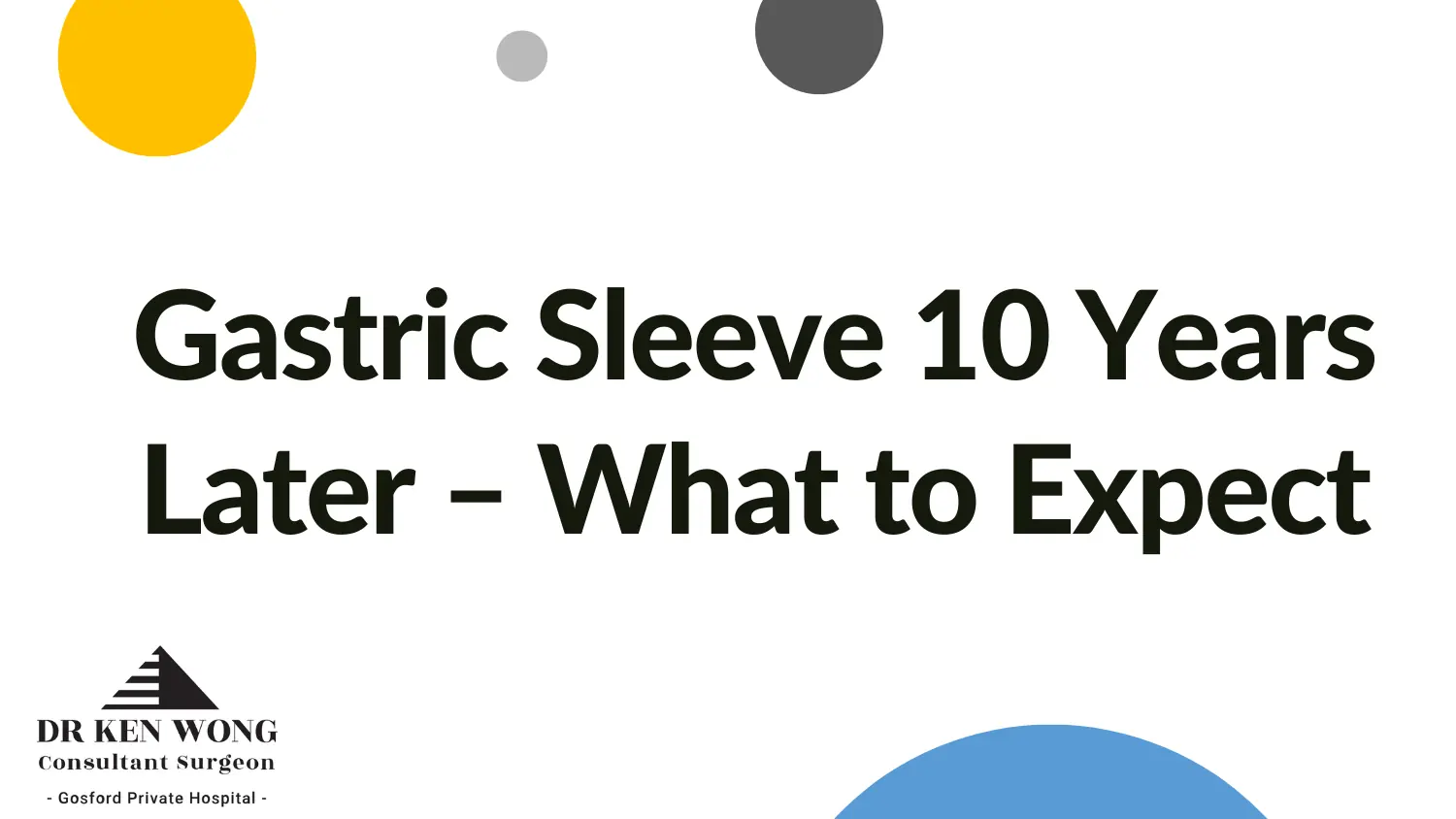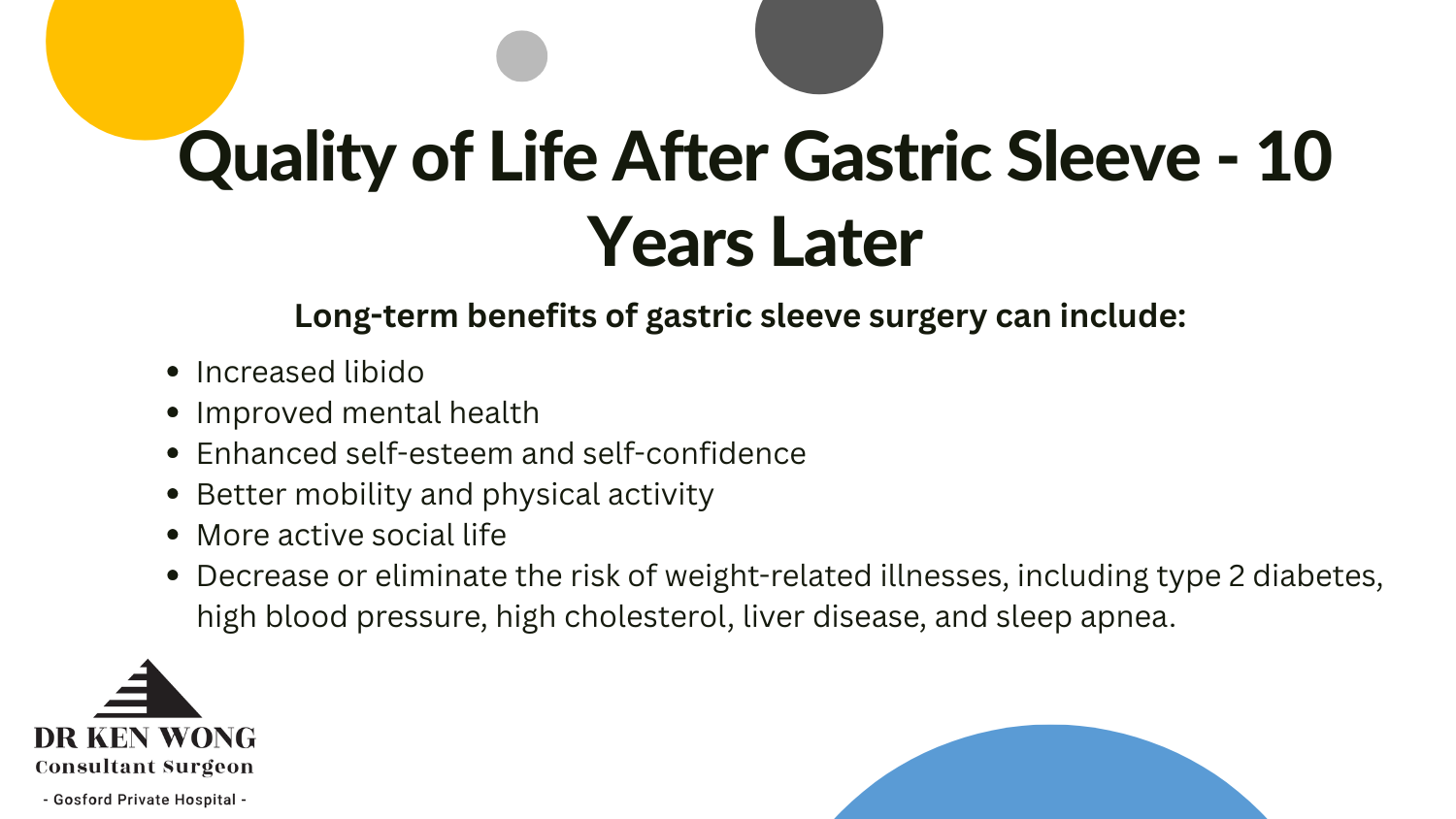
Gastric Sleeve 10 Years Later – What to Expect
Gastric sleeve surgery offers both short term and long term benefits including improved mobility, enhanced self-esteem, increased physical activity, and reduced risk of weight-related illnesses. However, maintaining weight loss after gastric sleeve surgery for 10 years or longer requires commitment.
Adhering to your surgeon’s recovery plan and committing to recommended lifestyle changes, including nutrition and exercise, are all ways to keep reaping the benefits of a gastric sleeve surgery over a decade later.
In this article, we delve into what to expect 10 years after gastric sleeve surgery.
Weight Loss 10 Years After Gastric Sleeve Surgery
Gastric sleeve patients often experience long-term positive outcomes, with most individuals able to maintain a 51% to 54% excess body mass loss 10 years after the operation. On average, a gastric sleeve patient will lose and keep off half of their excess body fat a decade after surgery.
However, the amount of weight lost can depend on several factors. These factors can include the remaining size of the stomach and how well the individual sticks to their surgeon’s recommended diet and exercise plan.
While weight loss 10 years after gastric surgery is generally maintainable, it is still possible to regain the weight or exceed the initial weight. Weight gain after surgery is most commonly due to non-compliance with following the surgeon’s plan and not sticking to a healthy, balanced lifestyle.
Quality of Life After Gastric Sleeve 10 Years Later
Gastric sleeve surgery offers life-changing, long-term benefits that improve an individual's quality of life. The surgery enables individuals who struggle with weight loss and maintenance to enhance their physical fitness, mobility, pain management, and mental health, thereby significantly improving their overall well-being for years to come.
Other long-term benefits of gastric sleeve surgery can include:
-
Increased libido
-
Improved mental health
-
Enhanced self-esteem and self-confidence
-
Better mobility and physical activity
-
More active social life
-
Decrease or eliminate the risk of weight-related illnesses, including type 2 diabetes, high blood pressure, high cholesterol, liver disease, and sleep apnea.

Possible Complications of Gastric Sleeve Surgery 10 Years Later
While it’s often agreed among our patients and experts that the positives of gastric sleeve surgery significantly outweigh the possible negatives, it’s still important to be aware of the long-term complications that may arise 10 years after surgery.
Food Intolerance
The stomach is reduced and tightened during surgery, causing the opening to the bottom of the stomach to become narrow. When food is too large or too rough, it may cause trouble moving through the narrow opening. This can cause food intolerance symptoms such as nausea, vomiting, bloating, and upper abdominal discomfort.
As gastric sleeve surgery is a permanent procedure, individuals must be mindful of the food they eat and how they chew for the rest of their lives.
Malnutrition
During gastric sleeve surgery, the stomach is reduced in size by about 80%, which means individuals consume smaller amounts of food. While this aids in weight loss, it makes it more difficult for the body to obtain the necessary nutrients from food, potentially leading to malnutrition.
Patients receive a nutrition plan from their gastric sleeve surgeon, which includes the recommended vitamins or supplements they must take to minimise the risk of nutritional deficiencies. Depending on the individual’s plan, they may be required to take these vitamins and supplements for the rest of their life.
Acid Reflux
Gastroesophageal reflux disease (GERD), or acid reflux, is a common complication after gastric sleeve surgery and can occur post-op or years after the procedure – about 15% to 20% of people who undergo a gastric sleeve procedure experience acid reflux. When the stomach is turned into a long, narrow tube shape, pressure inside the stomach can build up and exacerbate reflux symptoms.
Hernias
A hernia forms when an organ is pushed through a weakened tissue or muscle, causing a split in the weak section. If left untreated, tissue or organs are pushed through the opening, forming a protrusion. While developing a hernia is less common in gastric sleeve surgery, it is still possible for one to form months or years after the surgery.
Preventing Long-Term Gastric Sleeve Complications
There are ways to prevent long-term gastric sleeve complications both before and after surgery.
Before surgery
Measures to take to prepare for a safe gastric sleeve surgery include understanding bariatric surgery in depth through an education program, receiving nutritional and psychological counselling, stopping blood-thinning medication, and undergoing all necessary tests, such as a physical exam, blood test, and stomach imaging if necessary. If you are a smoker, you will also be required to quit smoking several months before surgery.
After surgery
After surgery, maintaining your overall health is crucial to reap the benefits and minimise complications. The most effective way to do this is to follow your exercise and nutrition plan, take the prescribed vitamins and supplements, stay hydrated, and attend follow-up appointments with your surgeon. You must also avoid or limit alcohol, sugary and starchy foods, and smoking.
Gastric sleeve surgery is merely an opportunity to kickstart a health journey, not a one-off, quick fix. The benefits that you can experience even 10+ years after gastric sleeve surgery are plentiful; however, you must be committed to maintaining the right lifestyle.
